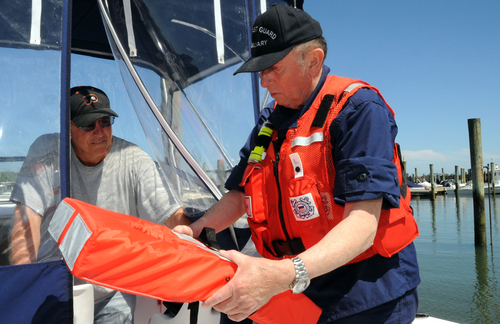By Christine Morford.
In 2018 alone, there were a reported 4,145 recreational boating accidents resulting in 633 deaths. Where cause of death was known, 77% of boating accident victims drowned, the vast majority of which were not wearing a life jacket. These harrowing statistics are proof of the dangers open water poses and emphasize the dire importance of boating safety.
For all boat captains, regardless if you own or rent, or ride on the lake or in the ocean, it is critical to
ensure your boat is properly equipped for emergency situations. Here is a brief checklist to help keep your boat in order.
Are you meeting Coast Guard requirements?
The Coast Guard can board your boat at any given time and ask you to provide proper documentation and proof of safety gear. In addition, it is permissible for them to check for any additional violations including environmental violations, such as littering, and if you are under the influence of drugs or alcohol (yes, these laws apply while operating a boat as well).
Additionally, you are required to display a registration sticker as well as your state-issued certificate number on each side of the boat, in contrasting colors. For boats over five tons, a federally documented title needs to be registered with the Coast Guard.
Requirements vary by state, so be sure to check out this helpful resource if you’re unclear on your state’s rules.
Do you have enough life jackets?
While not everyone is required to wear a life jacket, it is highly suggested. Auto-inflatables are available for riders over the age of 16. Make sure all auto-inflatables are working properly by checking sizes and inspecting straps and expirations.
It is required to have one life jacket per person on board in the appropriate sizes and one throwable
flotation device per person for boats over 16 feet.
Inflatable life rafts must be serviced and repacked by authorized service centers every few years based on individual product as these items can expire. Also keep in mind that the CO2 cartridge in inflatable life vests have expiration dates as well, and periodic checks to make sure the bladder is not leaking is recommended. To do so, manually inflate using the oral tube and let sit overnight in an area with constant temperature. Gently deflate and repack each life jacket being careful not twist. Each life vest comes with manufacturers care instruction which you can refer to.
Are you prepared in the event of an emergency?
Having the skills and ability to complete minor fixes is important, but that won’t get you anywhere if you don’t have the proper tools onboard. Consider keeping handy a replacement fuel filter, spare drive belt, tool set with Allen wrenches, a wire brush to remove corrosion, and a spare propeller for trolling motors, which is an inexpensive and useful item to have in your arsenal. Also, always be sure to have a medical kit, flares, tow rope, and an on-water assistance plan accessible at all times.
Before each trip, you should ensure that all necessities are onboard and working properly. While
emergencies happen, doing your part and being prepared can help keep you, your passengers, and other boaters safe. Lastly, if you are ever unsure or uncomfortable with inspecting or fixing an issue, call a professional to step in and assess.
Christine Morford is the Category Director for BOATiD.com. Driven by her love for the outdoors and
passion for the water, she has happily spent the last ten-plus years working in the marine industry.

